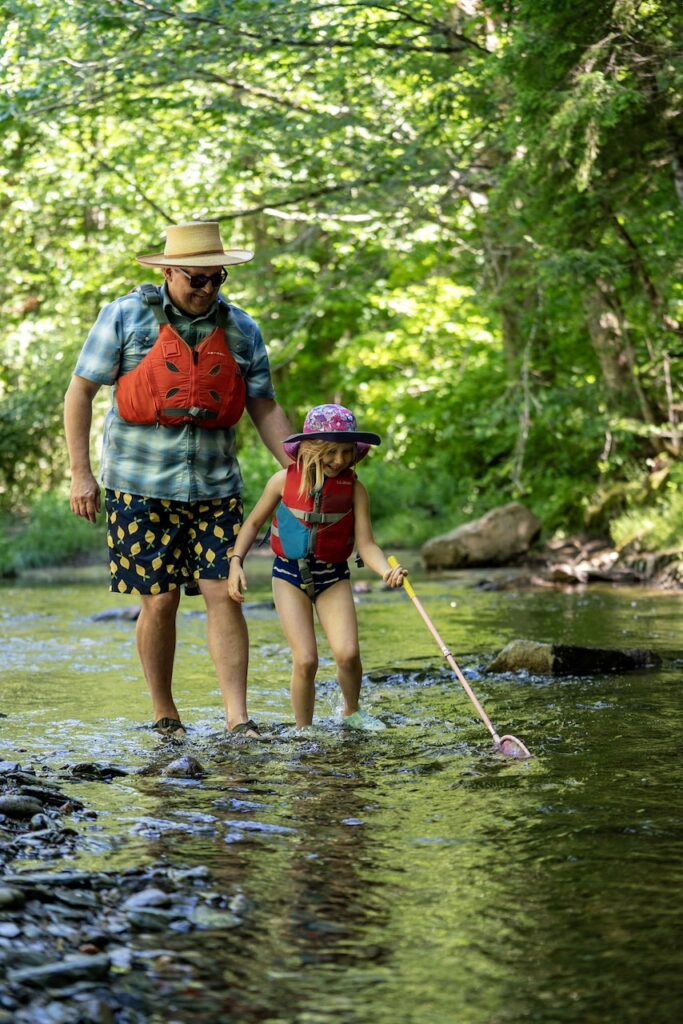Give TODAY with 3X Match AND enter to win the Ultimate Stowe Ski Getaway
Donate to Win
Donate to Win
Ask any Vermonter to share favorite summer memories, and chances are you’ll hear the words “swimming hole.” For eons, we have been drawn to waterfalls and gorges for their mesmerizing, ever-changing flow, the roar and thud, luxuriant green mosses, and quiet beauty. Thanks to the miracles of 500 million years of geologic change, Vermont’s pools and cascades are graced with a kaleidoscope of pebbles, pools, riffles, and deep potholes. These shady retreats are great places to cool off – whether swimming with kids, taking a dip after a hike, reading from a rocky perch, or just relaxing beside a babbling brook.
On the heels of the latest heat wave, it’s tempting to jump into cool water or take an afternoon dip in a swimming hole. As thousands of Vermonters head to their favorite swimming hole with friends and family, find yours using Vermont River Conservancy’s interactive guide to rivers where you’ll discover places to swim, paddle, fish, and explore.
When you head to the river this summer, make sure you’re prepared to stay safe, especially because the impacts of climate change are making Vermont’s favorite summer pastime more dangerous than ever before. Each spring, days can reach 80°F when water is still cold and running high, a recipe for disaster. Even the strongest swimmers can be overwhelmed by water that’s too cold and too swift to be safe. After years of back-to-back floods, we’ve all seen murky waters carry large trash and equipment downstream – objects that can lurk unexpectedly below otherwise calm waters. What may appear to be “deep enough” or “shallow enough” may be misleading (even when your feet can touch the pebbles and rocks!).

Father and daughter walking in river. Photo by Evan Kay
To have fun at your favorite swimming hole, Vermont River Conservancy has tips to help make sure your summer fun doesn’t end in disaster:
Want to see lists of sites to visit in your region? Check out our Central Vermont and family-friendly swimming hole itineraries.
Central Vermont Swimming Holes Itinerary
Family-Friendly Swimming Holes Itinerary
Swimming Hole Resources
Vermont Swimming Holes Webinar
Water Safety in Vermont
*First printed in The Bridge on July 14, 2025